Erdalsbreen is a glacier in northwestern Jostedalsbreen, Norway. A prehistoric cold spell was discovered in Erdalen valley.
Erdalsbreen lies at the head of Erdalen, a beautiful valley of grazed woodlands and glacial streams. But what makes the valley truly unique is a discovery made there in 1984. In that year Atle Nesje, a student at the time and now a leading professor, wrote his thesis on some remarkable moraines in Erdalen. He found that these ridges represent the first phase of glacier activity after the last ice age (Nesje et al., 1991).
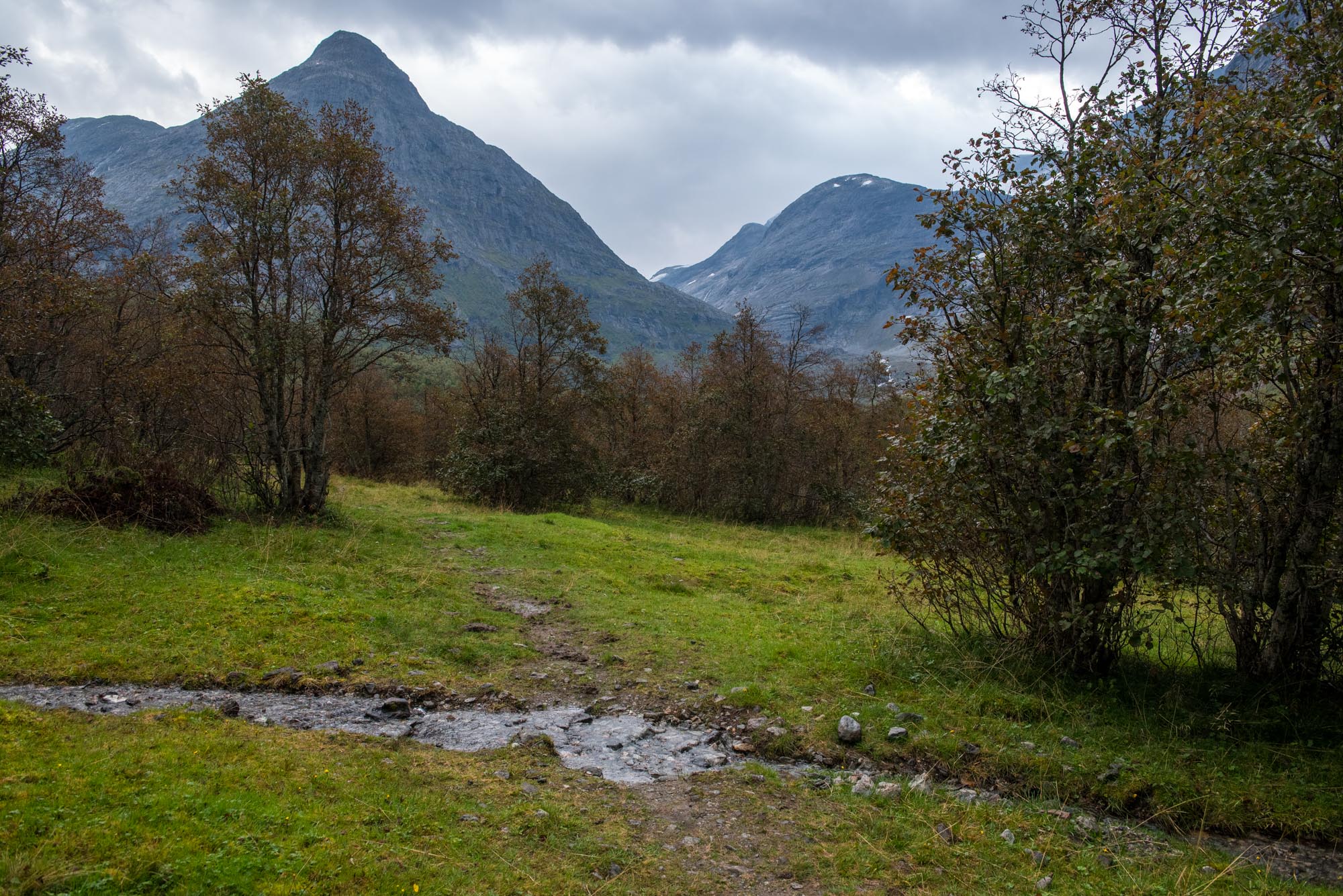
Norway was completely covered by glaciers during the ice ages, of which the last one ended some 11,700 years ago. Ice cover decreased, but glaciers readvanced for a while around 10,000 years ago. Though not as extensive as during the ice age, glaciers extended far enough to descend well into the valleys. This phase of glacial activity was first recognized in Erdalen by Nesje and is therefore known as the Erdalen Event. Later, moraines associated with the Erdalen Event were also found in front of other glacier in southern Norway (Dahl et al., 2002).

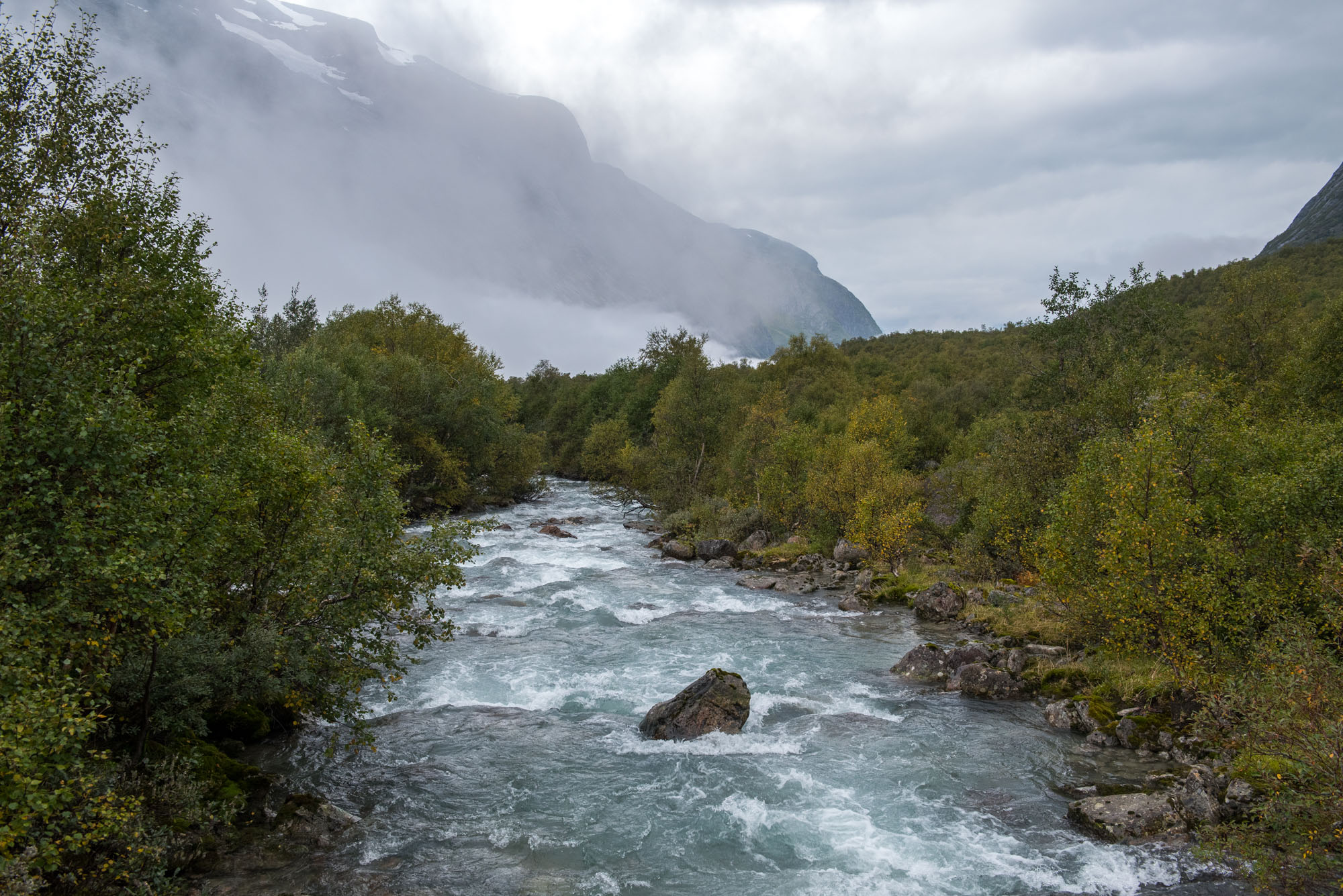

The terminal moraine that was formed during the ‘Erdalen Event’ is located at 480 m above sea level in Erdalen. It is covered by trees and surrounded by fluvial plains, without a glacier anywhere to be seen. Erdalsbreen namely lies 4 km farther up-valley and 400 m higher.
During another, much more recent period of readvance in the 18th and 19th century, Erdalsbreen was one km short of reaching the Erdalen Event moraine. But it did extent well beyond the cliff that separates the lower Erdalen from the glacier and a lake.

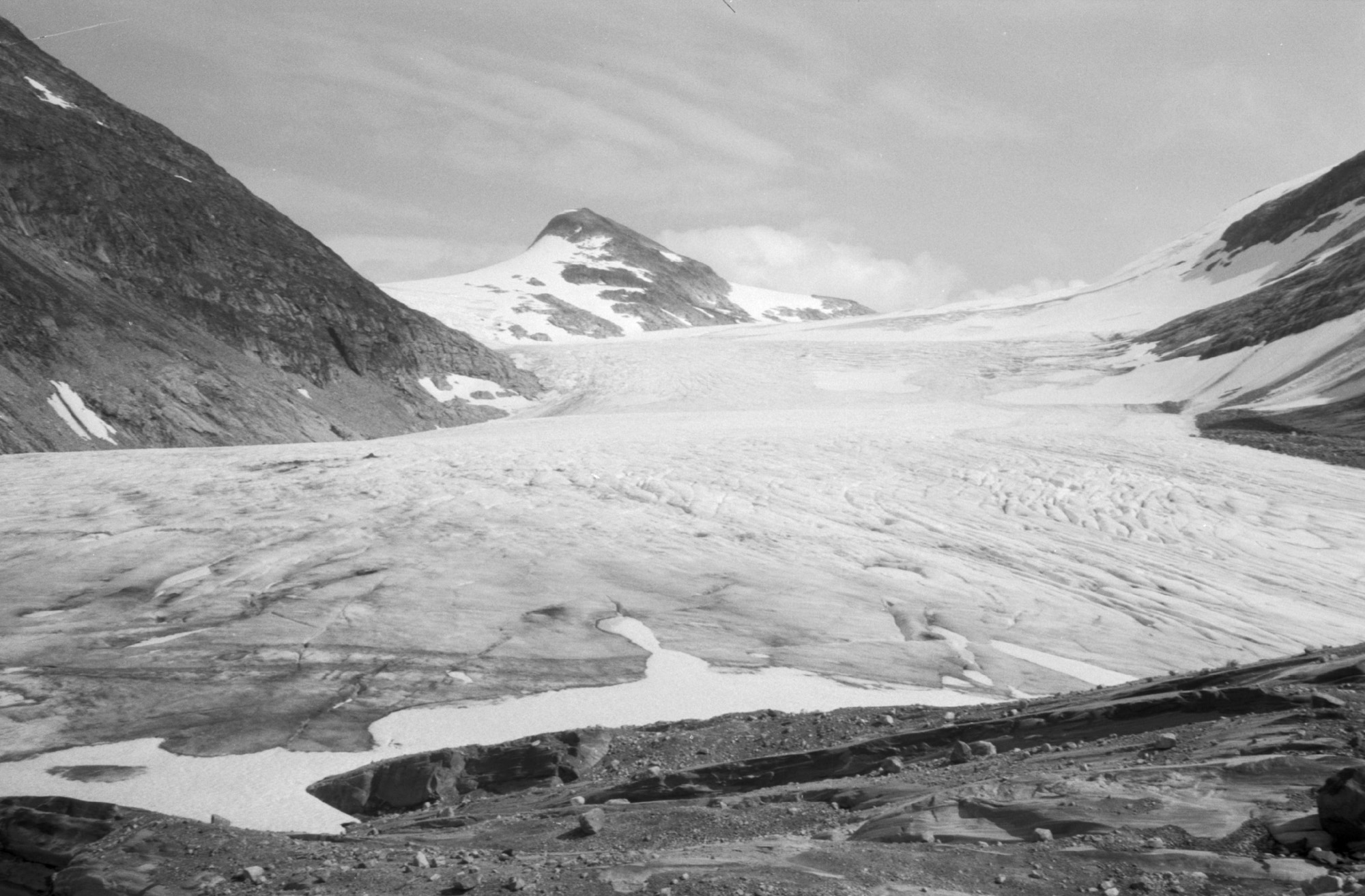
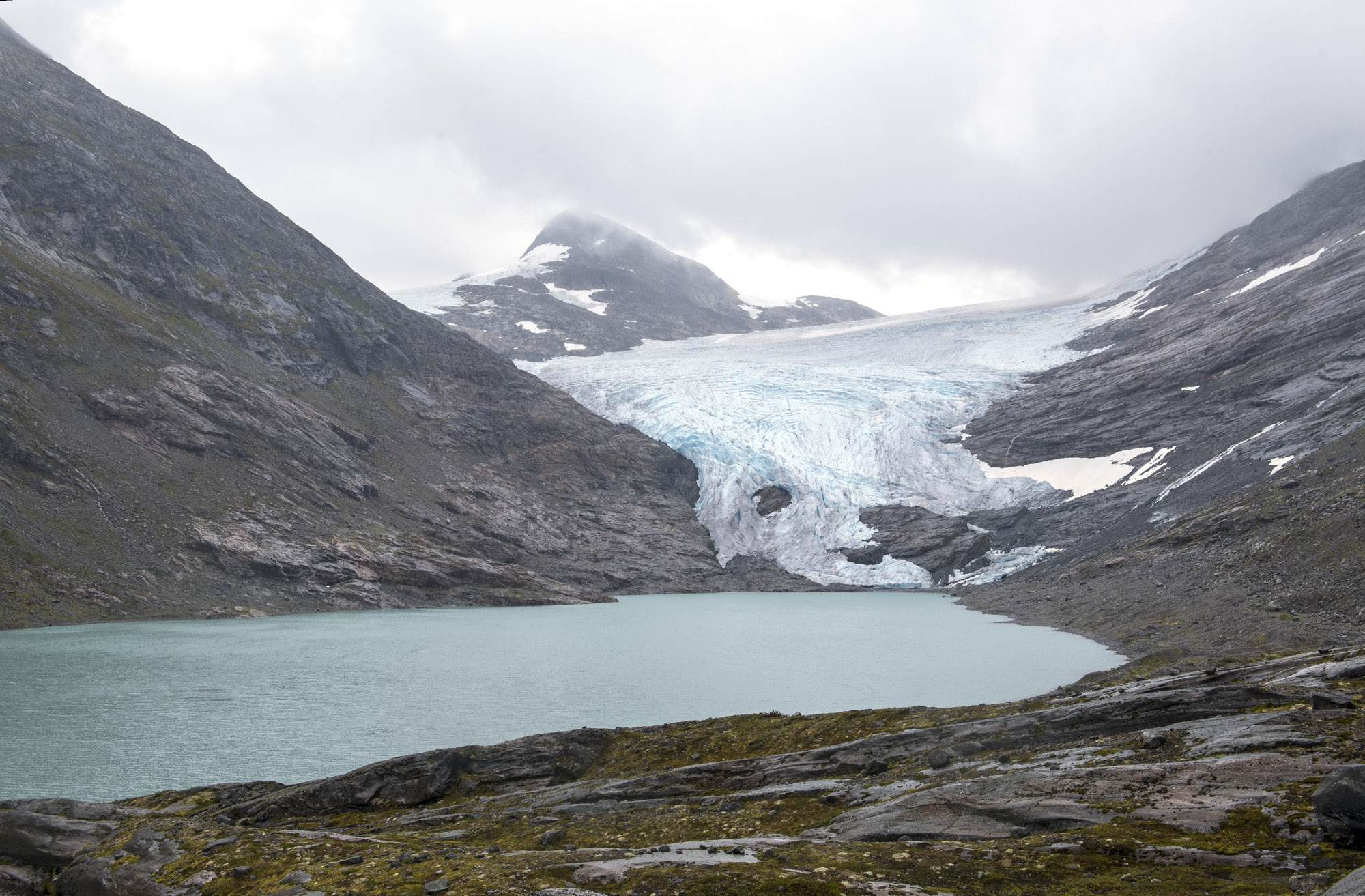
Erdalsbreen in 1970 and 2024. Source 1970: NVE Fotostrøm photo 02147.
In front of the glacier lies a 1.3 km long lake. It doesn’t bear a name on maps (yet), because the lake was covered by the glacier for centuries. Though the ice thinned throughout the 20th century, it wasn’t before the early 2000’s that the glacier really started to break up. It finally retreated from the lake in 2021, putting an end to icebergs in the lake.
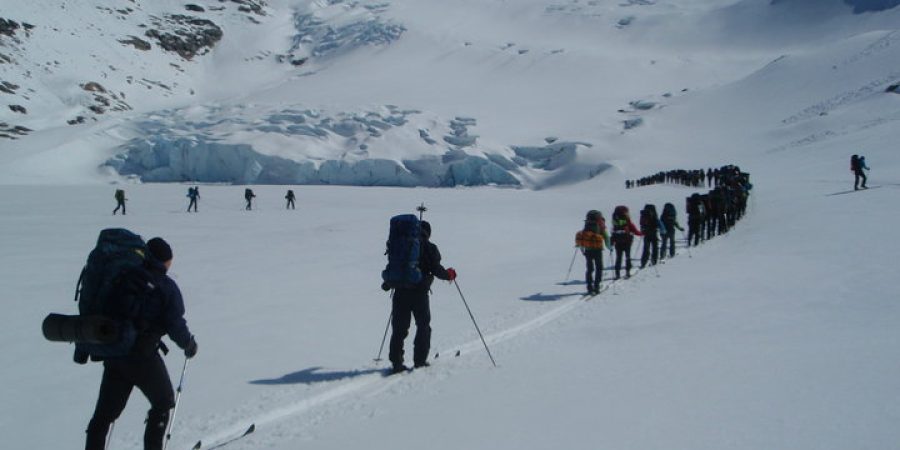
When the glacier still covered the lake, Erdalsbreen formed a natural route to cross Jostedalsbreen. Now, you can only reach the glacier when the lake in front of it is frozen. Moreover, the glacier has steepened and is therefore harder to climb. Still, in spring several groups start their ‘Josten på langs’ here – the classic but demanding skiing tour over the full length of Jostedalsbreen that traditionally starts at Erdalsbreen.
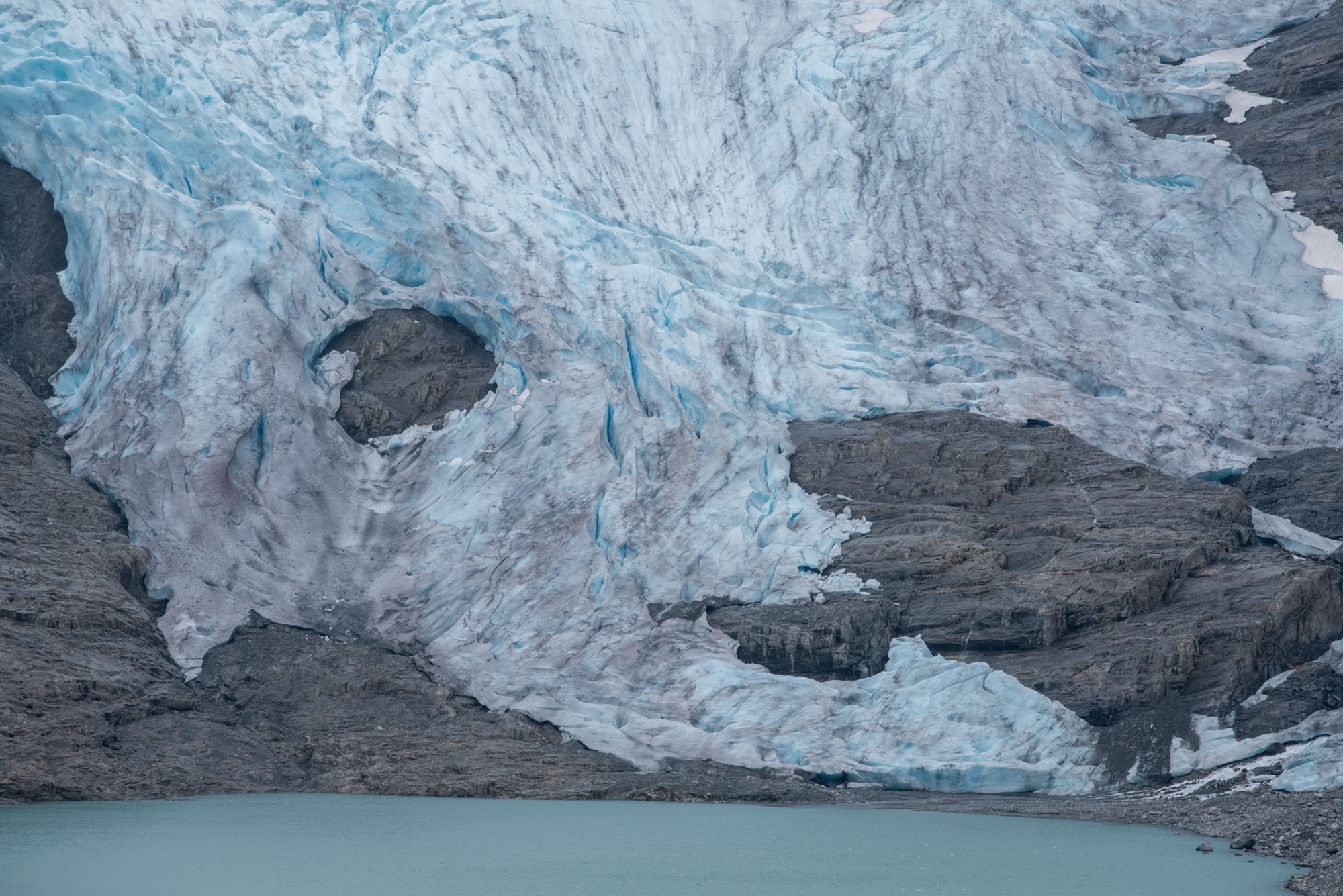
Erdalsbreen is losing its position as the starting point of ‘Josten på langs’ to Fåbergstølsbreen, mainly because Erdalsbreen is increasingly difficult to reach. Besides being dependent on lake ice conditions, the lower part of the glacier is disintegrating since 2023. That makes it even harder to get on top of the ice cap from here.
Even though the glacier stopped calving, the lake water remains dominated by glacial meltwater full of suspended sediments and dissolved solids. When the lake was sampled by geologists in the summer of 2006 they found the water to be over a thousand years old. That’s how long water molecules, falling as snow and transformed into ice, are trapped in the glacier before melting out again (Sæther et al., 2009).
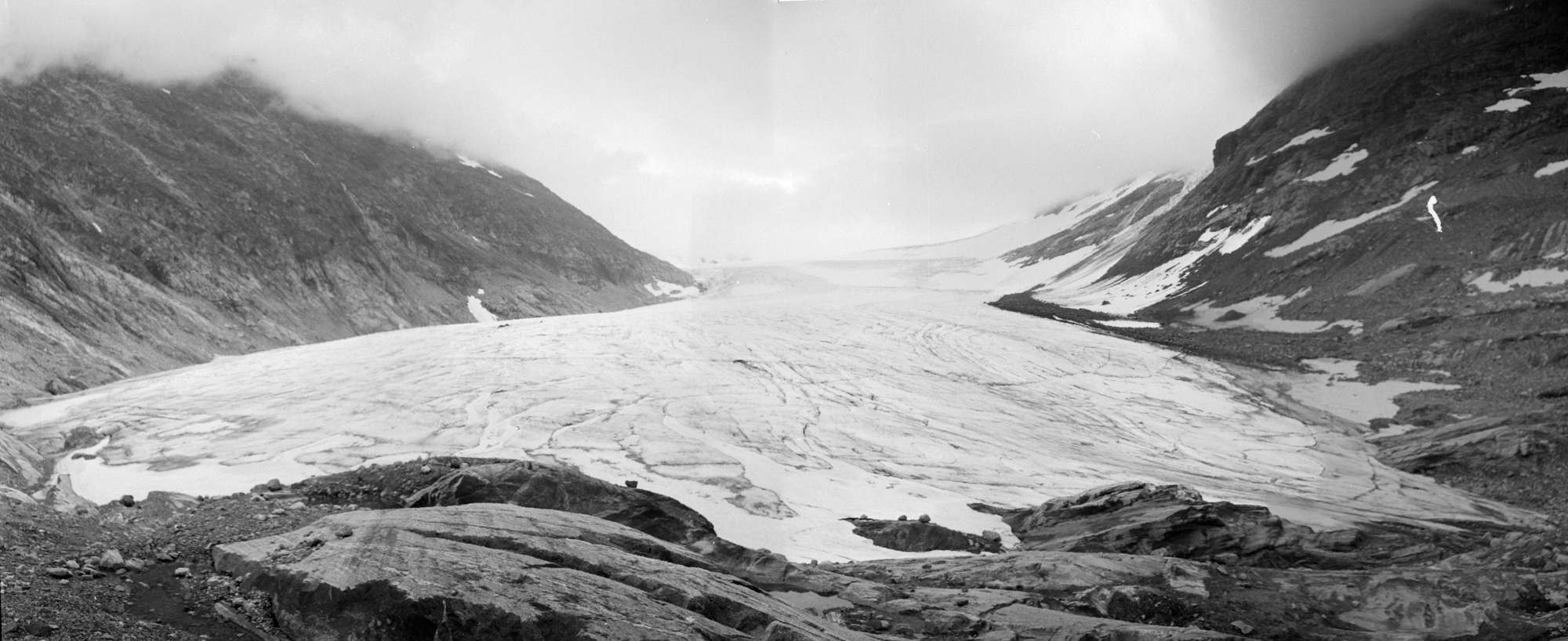
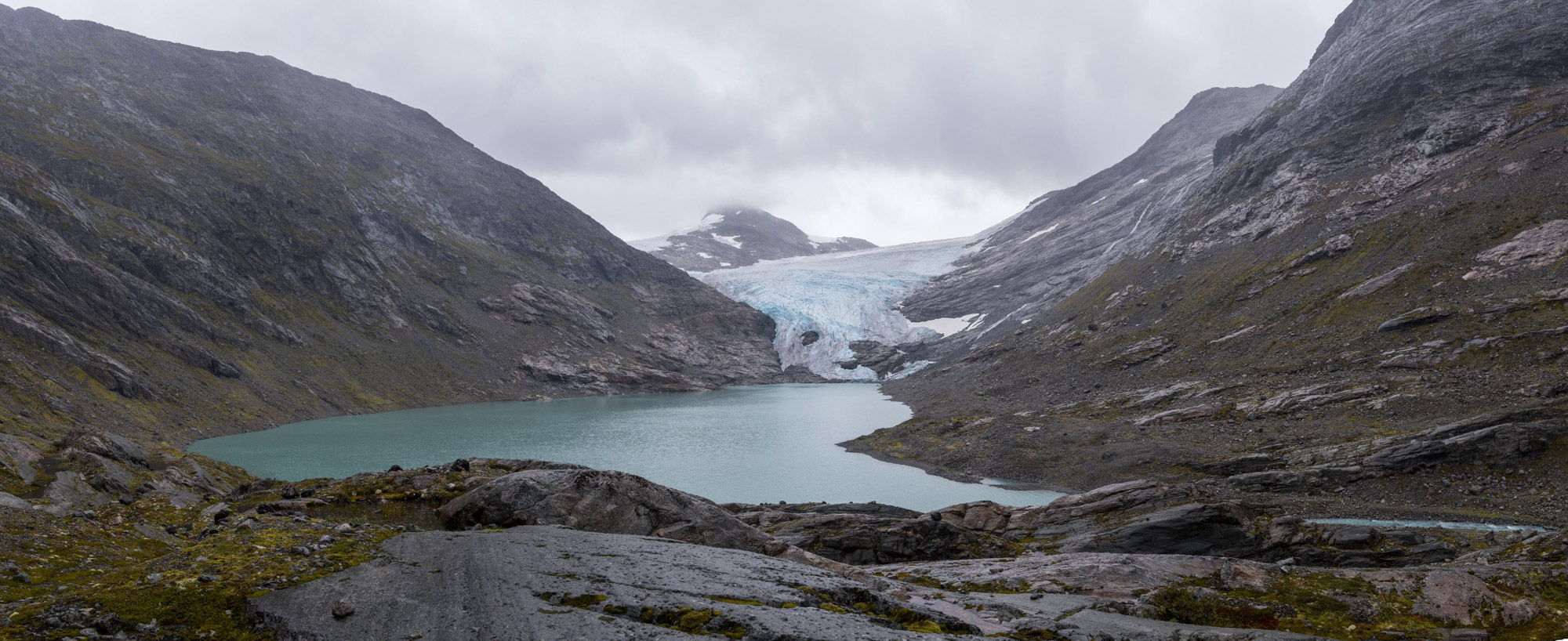
Erdalsbreen in 1969 and 2024. Source 1969: NVE Fotostrøm photo 02391.
A snowflake falling these years can only dream of being part of the glacier for a millennium. Instead, it likely melts out again the same year, as even the top of Erdalsbreen loses all of its fresh snow in most summers. There only is ancient ice left to melt, but it will eventually run out.
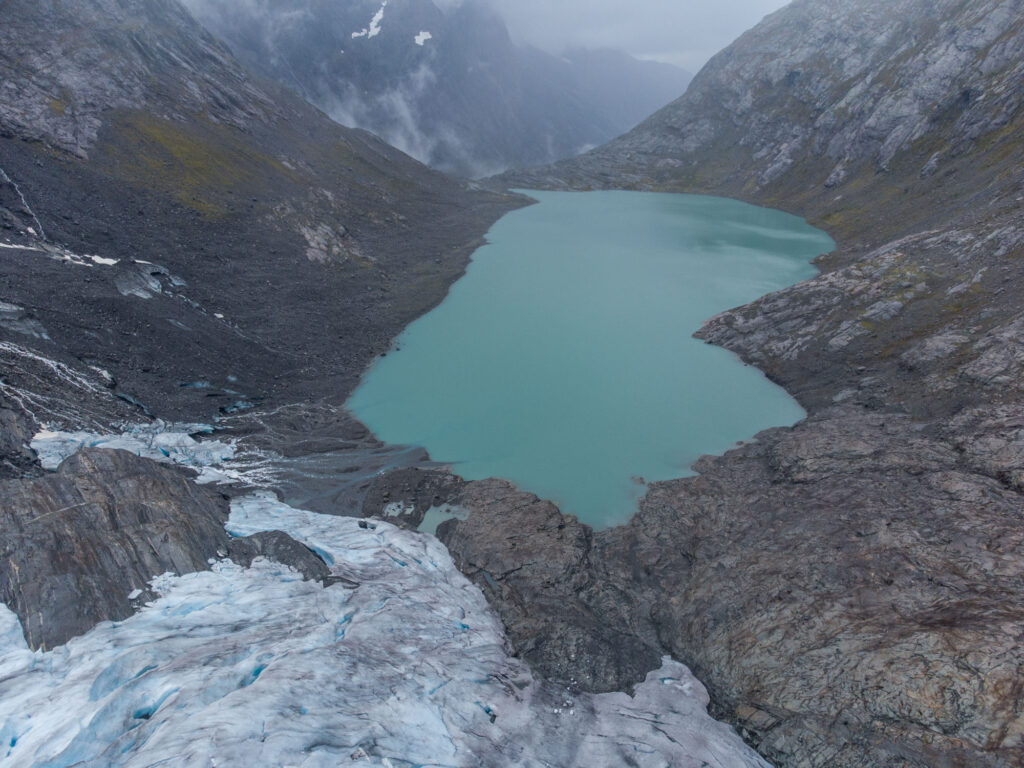
Search within glacierchange: